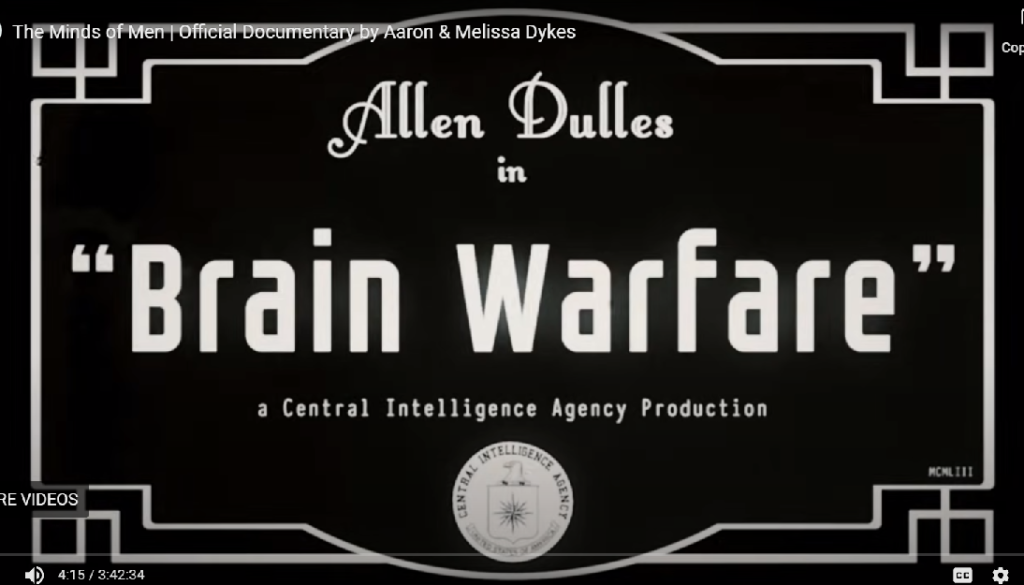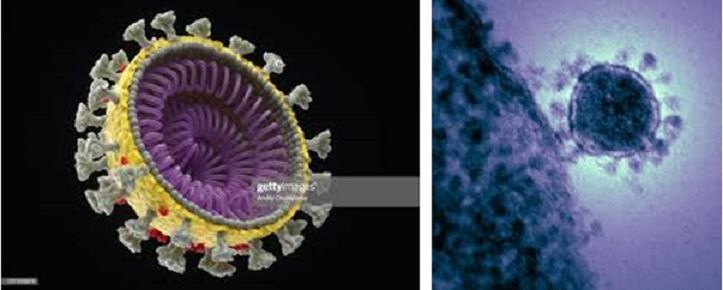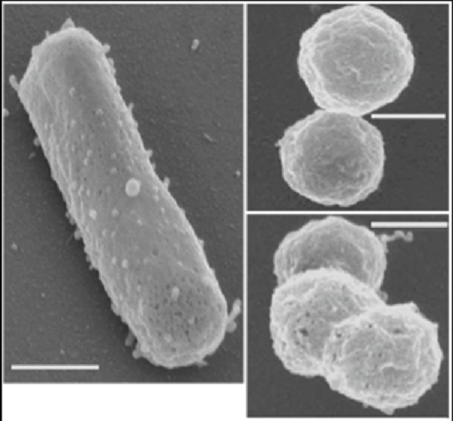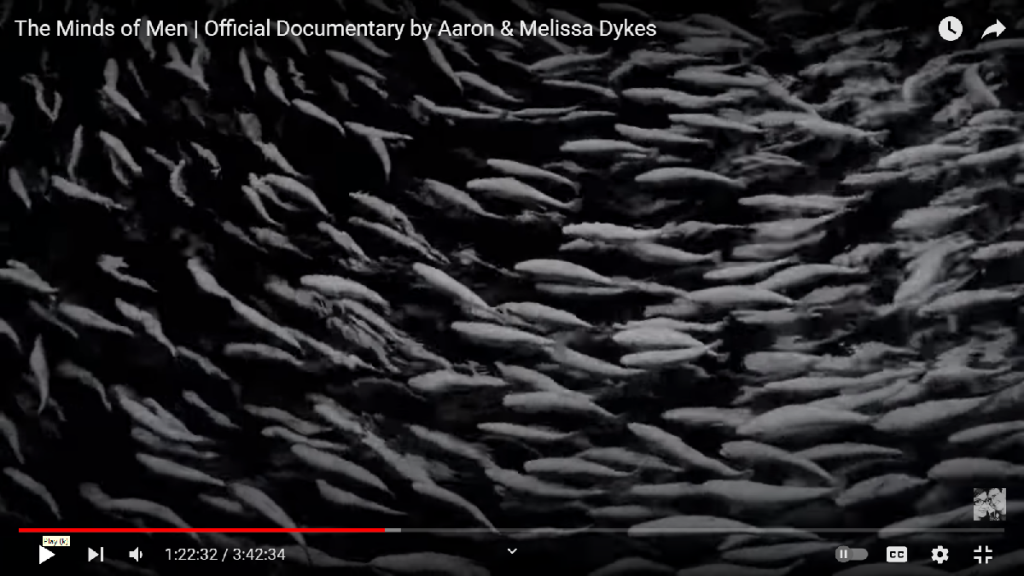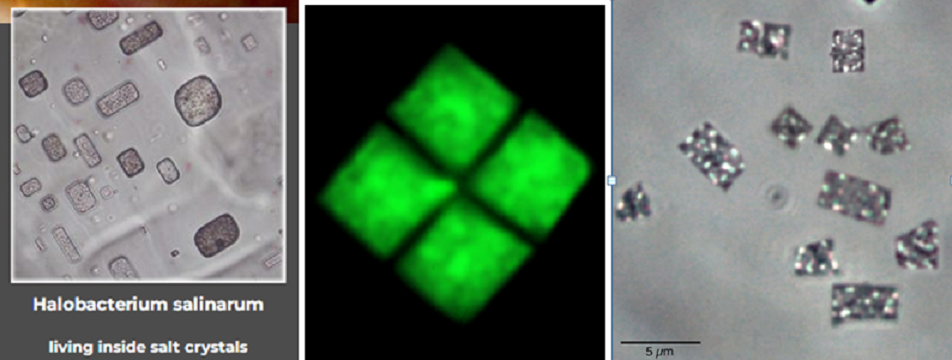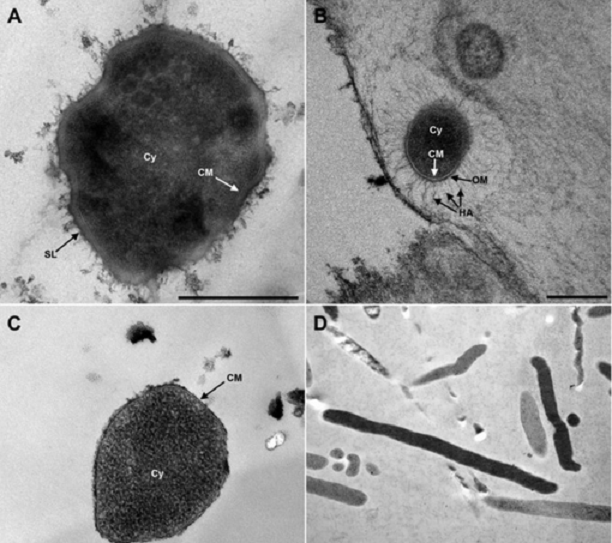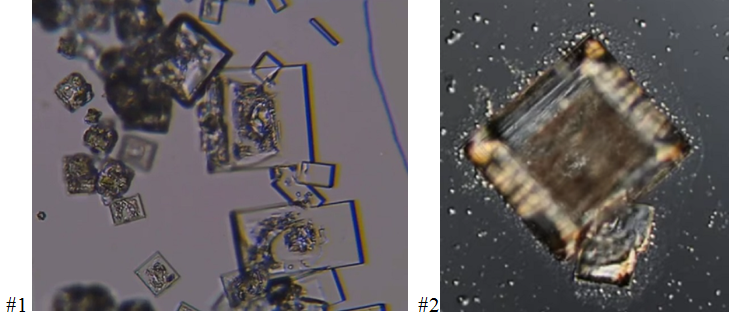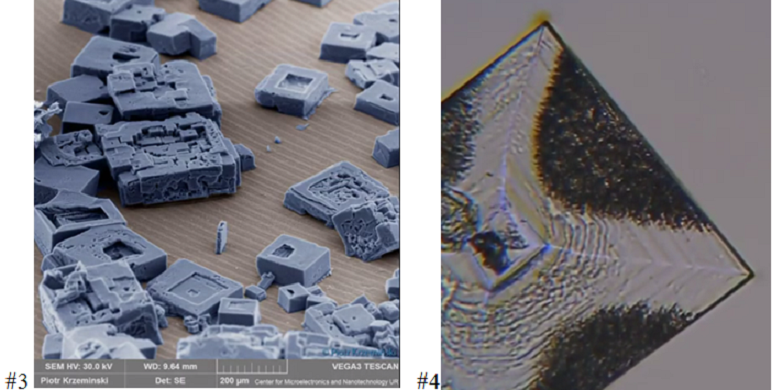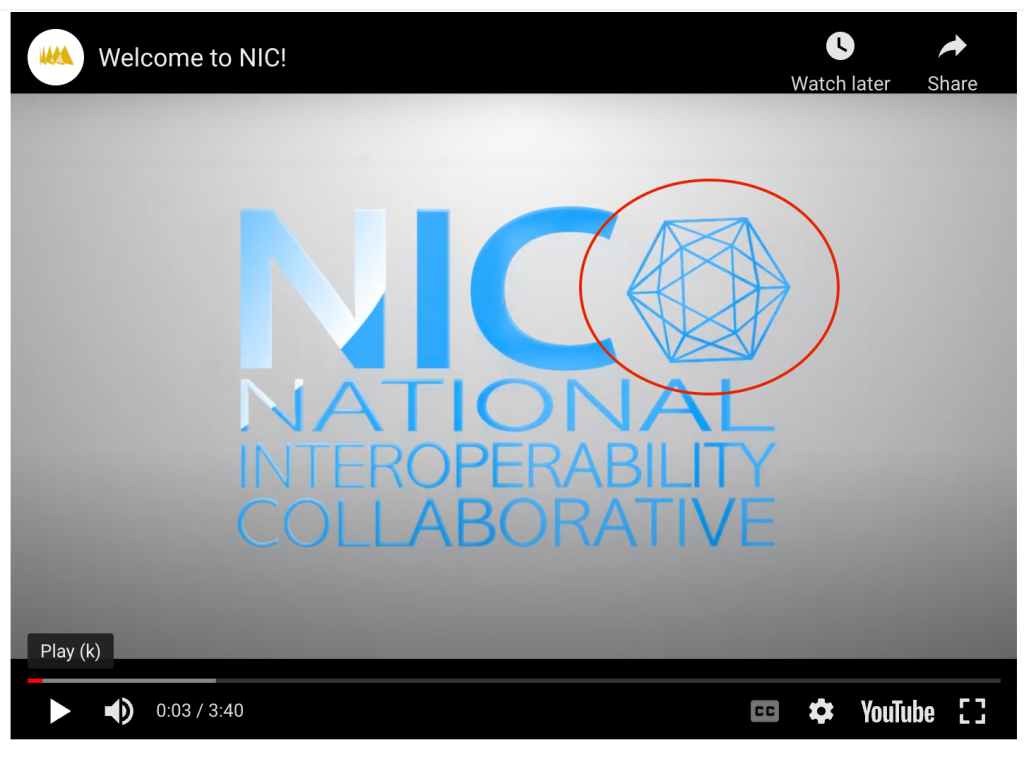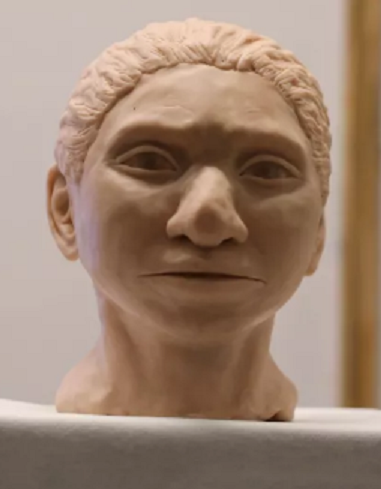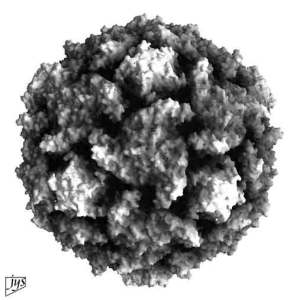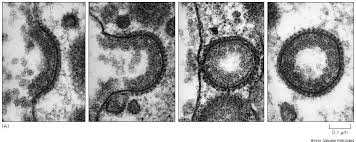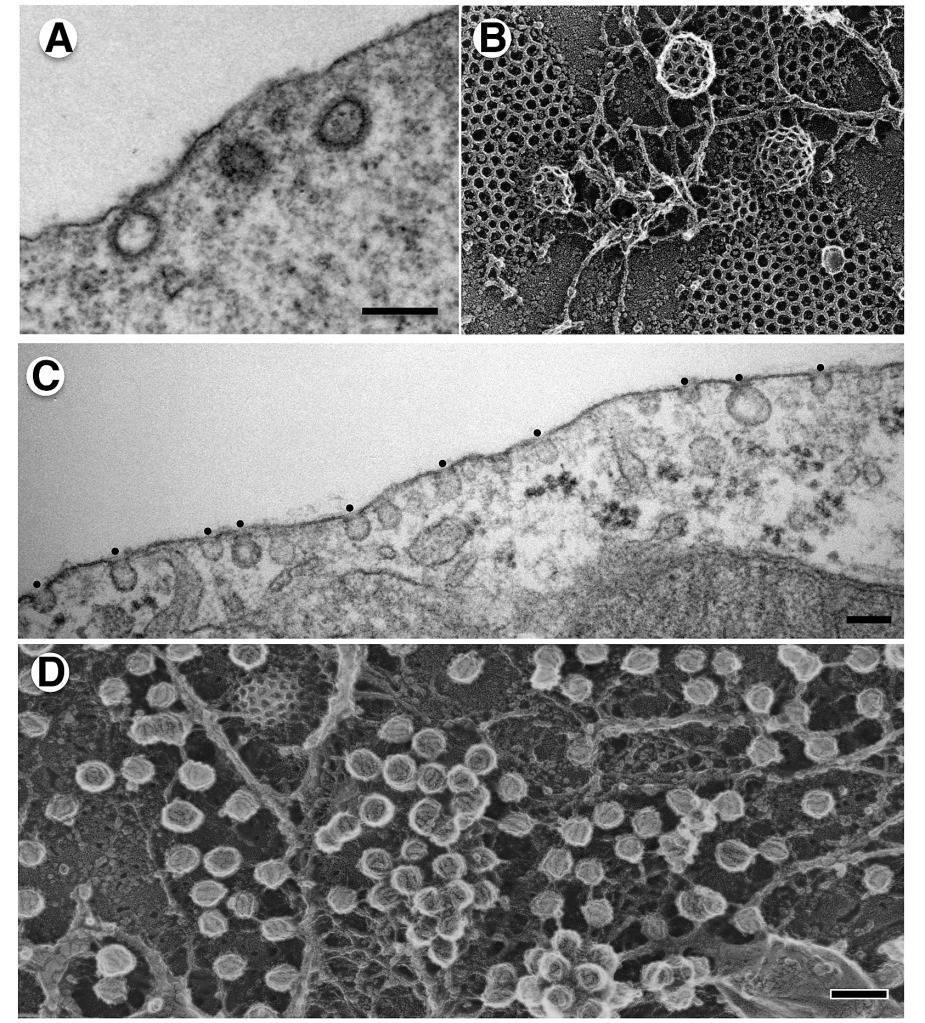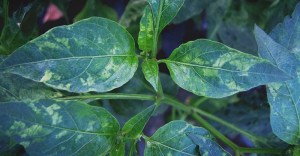*
Corona the Crow, Part One https://jenniferlake.wordpress.com/2022/06/10/corona-the-crow/
Part Two https://jenniferlake.wordpress.com/2022/12/06/corona-the-crow-part-two/
Part Three https://jenniferlake.wordpress.com/2023/01/02/corona-the-crow-part-three/
PART FOUR of the Crow is going to focus on corona as empirical technology, particularly as a medical paradigm of being taken by the head — physically, psychologically and socially. Hopefully, as a reader, the preceding parts of this series have adequately demonstrated that Corona the Crow stems from ancient ideas about the human mind. Brain anatomy is loaded with crow words; cortex, cerebrum, and claustrum, for example, nested under your cranium. “Psi,” the crow-foot (or fish spear) letter from the Greek alphabet, is a symbol for the mind, adopted by societies of medicalized psychology. The word ‘medical’ is itself an English latecomer, elaborated from the Latin word for ‘mediate’—medlare, to meddle– and the older Middle English word ‘medic’ which defined leguminous food plants like beans, subject to plantation methods in the birth of civilizations. A plant medic, according to my dictionary, has a distinctive structure of trifoliate leaves symbolized by example as the stylized Fleur-de-Lis: “fleur-de-lis, (French: “lily flower”) , also spelled fleur-de-lys, also called flower-de-luce…much used in ornamentation and, particularly, in heraldry, long associated with the French crown…” as a gift from the Virgin Mary, no less, who maintains her original status with me as a transplanted sea-bird. https://www.britannica.com/topic/fleur-de-lis .
Luce, of course, is the seemingly familiar root word meaning ‘light,’ but its actual Middle French/English origins identify it with a fish (the pike) as it remains, representing a large family of freshwater specimens. https://www.dictionary.com/browse/luce ; https://www.britannica.com/animal/pike-fish. One can digress to Fisher Kings, Merovingian ‘mermaids’, holey (‘cro’) blood and the divine Right to Rule within our Clockwork of Time and Water, but I would sooner get on with Mind Control in its variable and loathsome permutations. That is what Corona is about. Note in the 2018 documentary, The Minds of Men, this screen capture (minute 4) of the 1953 CIA-made film “Brain Warfare” starring Allen Dulles.
*
As Part Four progresses, I’ll be referencing The Minds of Men ( by Aaron and Melissa Dykes, 3hrs 43min, https://www.youtube.com/watch?v=LQucESRF3Sg )–noting the filmmakers own emphasis on MK-Ultra Subproject 119. The gematria (numerical letter) value of 119 is also the sum of the words Crow (=59) plus Raven (=60), mentioned in Parts Two and Three along with a lot of other ‘1’s and ‘9’s.
If you wanted to be a fisher of luce men, so to speak, it would help to have a proper boat and a strong net …so, let’s recap the definition of corona from Part I:
“Derived from Greek κορώνη (korone) meaning ‘crow’ … In Greek mythology, Coronis (/kɒˈrəʊnɪs/; Greek: Κορωνίς, translit. Korōnís) is a Thessalian princess and a lover of Apollo… By Apollo she became the mother of Asclepius,[2][3][4][5] the Greek god of medicine…”
Aesculapius and others like him were … “sprung from an egg”… “where a serpent in an egg is introduced as a true emblem of this deity… the emblem Coronis must sometimes have had a reference to the same…yet…Coronis was certainly a name given by the poets and mythologists to a particular machine: the same in which the gods are supposed to have been enclosed and to have suffered a temporary death. Coronis is accordingly said to have been a vessel or float… By Coronis is signified a ship…”
…………… here’s a ‘serpent in an egg’………shipping………FYI, these are official images of coronavirus presented by the mass media.
*
In this recent April 30, 2023 interview with Maria Zeee, Dr. Stephanie Seneff proposes a mechanism for shipping ‘virus’ particles from the Covid-19 injection site in the arm along nerve fibers to the brain, proofing on the symptoms of fatal neurological diseases like Mad Cow, or Creutzfeldt-Jakob Disease (CJD) in humans, and ALS (Amyotrophic Lateral Sclerosis, or ‘Lou Gehrig’s’) seen in post-‘vax’ injuries during the early months of 2021. The publishing source of these fatal effects came from an April 2021 paper co-authored by Luc Montagnier, mentioned at minute 36 by Dr. Seneff: “They know that it can cause a severe [fast-acting] form of Creutzfeldt-Jakob Disease, which is exactly what we’re seeing in those 26 patients that Luc Montagnier wrote about in the paper that got published after he died.”
Here’s the shipping statement in the transcript at minute 24–[Seneff:] “…That spike protein—it’s amazing because it looks like it’s been designed to be a bioweapon and it has so many toxic aspects to it that it’s disturbing to think [it can cause] your muscles to keep spewing out spike proteins and throwing it into exosomes and distributing it throughout your body… I want to get into this issue of distributing it along the nerve pathways, what I’ve come to believe, as a whole other topic [in addition to vaccine-carrying food plants] that I think I’ve finally gotten right… [minute 27–] So, here’s the story: The muscle cells take up nanoparticles, which look like LDL particles and the muscles have LDL receptors so they take up the particles, open [them] up and start making spike protein…, spitting it out as exosomes and releasing them into the synapse. So now, the muscles which are enervated by motor neurons…which have super long thread[s] from the spinal cord –axons, well, those axons are at the synapse to cause muscles to contract…[and] in that synapse you have all those [muscle cell-made] exosomes…releasing spike protein…and mRNA…and the axon will take up those exosomes [even though] it won’t take up the nanoparticles [because axons] don’t have LDL receptors…but they will take up exosomes. So now, [axons are] taking up exosomes and there are active transport proteins –there’s a molecular motor called dynein which is in the axon—that specializes in shipping stuff up the axon through the soma of the cell which is in the spinal cord… [and the exosomes get packaged into what are called endosomes] ..and the exosomes survive inside the endosome —the whole package gets shipped up to the core of the nerve cell that’s controlling muscle movement…and up the spinal cord to the brainstem.” https://zeeemedia.com/interview/uncensored-dr-stephanie-seneff-can-mrna-bypass-our-stomach-acid-if-they-put-it-in-our-food/
For the moment, Dr. Seneff’s description of nerve cells shipping loaded particle packages “up your tree” sounds reminiscent of the Queen’s Platinum Jubilee—yes! the T-Mobile Crow Show of last June with the overt lighting display of traveling DNA (linked in Part One). But there are many more correspondences related to this interview besides infection mechanics. In 1953 when the CIA issued the Brain Warfare film, the poliovaccine was initialized at small-scale human testing– testing whether subjects could survive the shots. The next year in ’54, the test expanded to 1.8 million schoolchildren followed in ’55 by nationwide mass vaccination. In some of the coverage areas polio stats skyrocketed from 400% to 700% over pre-vaccine case numbers.
Here’s a brief excerpt posted at the Polio Forever blog from the book The Polio Paradox on the subject of latent, later-in-life post-polio, by Richard L. Bruno:
Chapter Three “The Guided Missile”…[p20] quoting researcher David Bodian: “The average number of spinal cord motor neurons that are destroyed by the poliovirus is almost 50%. However, nonparalytic polio may be associated with severe neuron damage in the spinal cord. What is more, some with nonparalytic poliomyelitis do not have any damage in the spinal cord but have characteristic damage in the brain, which is more extensive than in some who did have paralysis. All available evidence shows conclusively that every case of polio exhibits damage in the brain. The poliovirus is capable of producing an encephalitis, with or without symptoms, in the absence of any damage to the spinal cord. As far as the pathologist is concerned all cases of polio are encephalitic”. [p21] It’s amazing that something so small can do so much damage…But the poliovirus doesn’t attach to and damage just any cell. It is a ‘guided missile’ that does one thing: seek out, damage, and destroy the neurons that “activate” you –the ones that activate your brain and muscles. The poliovirus is the perfect human “Off switch”… https://polioforever.wordpress.com/the-polio-paradox/
*
Polio is fundamental to the fields of Psychiatry, Psychology and Neurology:
On the record, the disease we came to know as ‘polio’ in mid-century America arose with industrialization and occupational exposure to toxic metals and chemicals –prior to the 1850s, the ‘flaccid paralysis’ of acute illness was rare enough to be medically unknown. Small epidemics (10-20 cases) were first observed and recorded among iron-and-steel mill workers in Norway and Sweden. In the following decades, the spotty appearance of polio-like disability began to affect numerous industrial workers across the range of chemical users. One famous polio case in particular, “the French patient” youth who worked in the leather dye-solution vats at a tannery, virtually assured the ascending reputation of neurologist Jean-Martin Charcot (1825-1893) who classified several of the neurodegenerative diseases of the 20th century, among them ALS (Lou Gehrig’s) and Multiple Sclerosis. Polio, by historical measure, gave rise to the academic fields of Neurology and Psychology, a two-way schism that developed around the 1870s and onwards from the study of ‘neurasthenics’. In our corona Mind Control context, the 1901 founding of the Rockefeller Institute for Medical Research (RIMR, renamed Rockefeller University) stands as the first milestone marker. RIMR’s establishment mission statement was to “pasteurize milk and study polio.” Almost no doctors in the U.S. had ever heard of poliomyelitis. In 1953, again, with the Salk vaccine in human testing and on the near horizon, the medical establishment altered polio’s diagnostic criteria. Even Franklin Delano Roosevelt posthumously had his polio changed to Guillain-Barre Syndrome, a top ranking ‘side effect’ of Covid-19 injections. As of today, I’ve learned that the most salient facts about polio are (1) that radiation exposure is a stand-alone cause, most likely by x-rays from the 1890s forward, and (2) the ‘germ’ was unknown until the mid-1950s following the vaccine and is most likely sourced from plants.
Read more about the far-reaching Rockefeller Institute https://polioforever.wordpress.com/the-rockefeller-institute/
An update due to the polio pages which were posted back in 2011 requires another look to our crow friends who were felled in 1999 from a mosquito-borne contagion said to be West Nile Virus: “West Nile virus hit American Crows particularly hard. When the disease first appeared in New York City, in summer 1999, nearly 5,500 crows died in 4 months. Tests suggested the disease was 100-percent fatal to crows. Many other species, from jays and magpies to gulls and chickadees, also proved susceptible. Millions of birds died as West Nile swept across the continent in just five years…” [2010 issue of BirdScope]” https://www.allaboutbirds.org/news/counting-crows-the-impact-of-the-west-nile-virus/#
More recently than 2010, the WHO has added this highlight (in bold): “West Nile Virus (WNV) was first isolated in a woman in the West Nile district of Uganda in 1937. It was identified in birds (crows and columbiformes) in Nile delta region in 1953. Before 1997 WNV was not considered pathogenic for birds, but at that time in Israel a more virulent strain caused the death of different bird species presenting signs of encephalitis and paralysis… [In humans, the] symptoms of severe disease (called neuroinvasive disease, such as West Nile encephalitis or meningitis, or West Nile poliomyelitis) include headache, high fever, neck stiffness, stupor, disorientation, coma, tremors, convulsions, muscle weakness and paralysis… Birds are the reservoir hosts…” https://www.who.int/news-room/fact-sheets/detail/west-nile-virus ; the 1953 intel appears to be new.
*
Author of the 2017 book The Invisible Rainbow, Arthur Firstenberg, wrote, “In 1982 I was in my final year of medical school… One day I collapsed and was unable to get up… It wasn’t a heart attack, but it was six months before I could walk up a flight of stairs without becoming short of breath… I gradually found that I was being effectively disabled by my society. Having stumbled upon an obviously well-kept secret, I researched the world literature on bioelectromagnetics… together with other members of a support group I had found how best to live with my disability… But in July 1996, to my dismay, I learned that an innovation was coming to my city which threatened to make it impossible to avoid exposure any more… [On] November 14, 1996, Omnipoint, New York City’s first digital provider..open[ed] for business… According to health authorities, an early flu hit New York City –but not Boston and not Philadelphia– on about 15 November… I learned that in February 1996, Congress had passed a law prohibiting local governments from denying permits for cell phone antennae because of environmental concerns… I also learned that the FCC had just issued regulations setting public exposure limits for microwave radiation at levels..ten thousand times higher than levels..causing reports of illness from all over the world.” http://www.whale.to/b/elfb.html
Omnipoint, est.1987; “before Omnipoint, the use of encryption technology was mostly limited to military communications. Omnipoint is the first and only company in the New York metropolitan area to use GSM – Global System for Mobile communications.” http://www.schneier.com/cmea-omnipoint.html
There is enough circumstantial evidence to suggest that Omnipoint’s Global System for Mobile (GSM) signal operations were among the mechanisms spreading West Nile and much of it is in the polio literature.
“The GSM standard was accepted in the United States in 1995. GSM-1900 cellular systems have been operating in the US since 1996.” http://inventors.about.com/library/weekly/aa072199.htm
Omnipoint’s “Personal Communications Systems, PCS..[was] a newer class of wireless..services..authorized by the FCC [which] use a different radio frequency, the 1.9 GHz band, than cellular phones and generally use all-digital technology for transmission and reception… In 1994, the FCC announced it was allocating spectrum specifically for PCS..” http://inventors.about.com/library/weekly/aa072199.htm
“PCS differs from existing cellular and SMR in three basic ways: frequency, spectrum and geographic division. PCS networks operates in a higher-frequency bank (1850-1990 MHz) compared to the cellular and SMR frequency (800-900 MHz). The higher frequency band for PCS networks requires a greater number of total cell sites to cover the same geographic area as existing cellular networks… http://www.hotstocked.com/companies/n/northeast-digital-networks-inc-GSMI-description-68560.html
Dec.1997–“In wireless, it is often said, coverage is king. Omnipoint has had its fair share of cell siting hassles. To get over objections, the carrier has placed its transceivers inside gargoyles on the facades of landmark buildings in Manhattan..” http://www.rcrwireless.com/article/19971229/sub/rcrs-1997-person-of-the-year-george-schmitt-omnipoints-george-schmitt-burns-the-midnight-oil-to-build-pcs-firm/
New York’s Office of Emergency Management (OEM) system could also be to blame: NYC “OEM frequencies transmit in a narrow range at 147 MHz.” http://www.dhses.ny.gov/oem/radiological/
” …human neuroblastoma cells were exposed to electromagnetic radiation at 147 MHz, amplitude-modulated (AM) at 16 Hz… Enhanced efflux at 0.05 W/kg peaked at the 13-16 Hz and at the 57.5-60 Hz modulation ranges…These results confirm that…radiofrequency radiation can induce responses in cells of nervous tissue origin from widely different animal species, including humans…” http://www.scribd.com/doc/34980786/RF-Induced-Calcium-Ion-Efflux-Enhancement-From-Neuroblastoma
“Dr [Ross] Adey demonstrated how a 147-megahertz (MHz) field, which at tissue level had an intensity of 0.8 milliwatts per square centimetre, caused an efflux or release of calcium ions from the irradiated brain tissue…” http://www.whale.to/b/adey.html
In 2002 Omnipoint became T-Mobile https://www.reference.com/business-finance/omnipoint-communications-new-york-9e34507adf4eba25 ; Dr. Adey is one of several researchers in the 50s and 60s known to have participated in MK-Ultra Subproject 119.
*
MKULTRA Subproject 119
“Activation of human behavior by remote means.”
” 2. Purpose of Project: To make a critical review of the literature and scientific development related to the interpretation of bioelectric signals from the human organism, and activation of human behavior by remote means. 3. Progress to Date: Satisfactory.”
sources:
https://archive.org/details/DOC_0000017376/page/n1/mode/2up
https://www.illuminatirex.com/list-of-mkultra-subprojects/
_______________________________
Among the technical successors to MKULTRA’s Subproject 119 is optogenetics which in recent years has gone wireless thanks to a light-sensitive protein from algae called ChRmine (pronounced KAR-meen) described here by Karl Deisseroth, a leading researcher at Stanford. Listen through minute 25 https://www.youtube.com/watch?v=Ls07NZRJp6E ; It’s no longer necessary to cable a light source into the brain. Deisseroth says of ChRmine: “you don’t have to bring in light power…but you still have to bring in the gene.”
min24: “…[Behaviors are] assembled from parts, just like anxiety, and are tunable and can be brought down to the physical elemental components using optogenetics. So that’s pretty interesting, but then ChRmine changes the [?’sass’?]. We do like the fiber optic method—we can bring in light to a particular region but the extreme light sensitivity of this new channelrhodopsin means we can even do noninvasive light delivery. Here’s an example of that: We can have the fiber optic completely outside the brain of the animal and we can target deep structures like the ventral-tegmental-area dopamine neurons. Using an electrode we can track how well we’re doing and we can actually drive these neurons, drive the action potentials of these neurons, without brain-penetrating hardware at all. In fact, you can use non-injection-based tricks to get the gene in too—we [already] have ways of getting [the genes] into the brain with an intravenous injection, and this was developed by a friend, post-doc grad student of mine named Vivianna Gradinaru…now at Caltech. So, you can do completely noninvasive deep fast control of neurons now. And that raises all kinds of questions…”
*
…and my question is: Were Covid vaccines shipping mRNA-making optogenetic ‘light’ proteins, and will there be more of it in future mRNA vaccines? Some potential visual clues about future mind control technology in the Dykes documentary seem very suggestive despite appearances of past history. The opsin proteins at issue are called channelrhodopsin 2, or ‘channel 2’ images, shown several times in the video but shown first at 1:19 (1hr 19 minutes plus 33 seconds precisely). A clue? Do they teach that in film school? The significance of movie timecodes and numbers is covered in Part Two where I had my initial Back to the Future moment with the Crow.
Bringing in the genes to optogentically modulate humans, they tell us, requires transfection:
“So, the technology is relatively simple. You take DNA from a microorganism, Chlamydomonas for example, and connect it with a promoter region from the cell of interest, pack it into a virus, inject the virus into the brain, and then you wait… and study the behavior…” —minute 29, from speaker Peter Hegemann, “Optogenetics: Illuminating the Path toward Causal Neuroscience”, a Harvard prize-giving presentation recorded in 2019 https://www.youtube.com/watch?v=hOKLMjuwlLo
Now that we have a working model of ‘muscle-to-axon’ infection mechanics on how to “inject the virus into the brain” let’s check back in with our White Raven researchers:
[Sep15, 2021] “Biochemist Katalin Karikó and her colleague Drew Weissman were recently awarded a $3-million Breakthrough Prize for their work… Karikó, who is now senior vice president and head of RNA protein replacement therapies at BioNTech (the company that co-developed a COVID vaccine with Pfizer), and Weissman, a professor of vaccine research at the University of Pennsylvania’s Perelman School of Medicine, have just been awarded…for their work on modifying the genetic molecule RNA… Karikó spent years on this research despite skepticism and a lack of funding. Ultimately, however, her efforts paid off… Weissman and his colleagues had been working on an mRNA vaccine for influenza when word spread of a mysterious pathogen causing pneumonia in people in Wuhan, China, in late 2019. Weissman quickly realized this virus was a perfect candidate for an mRNA vaccine, and Pfizer-BioNTech and Moderna soon pivoted to work on one. The rest is history… [said] KARIKÓ: ‘From 2018 we had worked with Pfizer to develop a vaccine for influenza. And we were already ready to start a clinical trial for that. But switching over to COVID, it was just a technical thing. And so it was already ready. If the pandemic had happened 20 years ago, you would need to have, physically, in your hands, a piece of the virus. So that would be a big delay. But commercial gene synthesis started about 20 years ago. Now you can just order a gene. You order DNA, and then you insert it into a [typically circular molecule of DNA called a] plasmid, and then you make RNA. But making the nanoparticle to deliver the mRNA is kind of challenging.’ [question:]The lipid nanoparticles were a key part of the technology to make it useful for vaccines, right? KARIKÓ: ‘In my view, yes. The lipid nanoparticle protects the mRNA outside the cell because, in the blood and everywhere, there are a lot of human enzymes that can degrade the RNA. Second, it helps it to enter because the [muscle] cell will pick up the particle. And then it is in the endosome [a membrane-bound compartment] in the immune cells, and then this lipid nanoparticle helps escape from the endosome to the cytoplasm [the solution inside cells] so the protein can be made. It is a very smart particle.’ ” https://www.scientificamerican.com/article/an-mrna-pioneer-discusses-how-her-work-led-to-the-covid-vaccines/
*
Influenza mRNA injections “already ready”:
From Redacted News, May 17, 2023: “It’s STARTING—the NEXT pandemic is here & children are the target says Bill Gates” [17 minutes]: “…”it’s coming and right on cue the UK government today, this morning, announced it’s testing for a new avian flu outbreak… watch [this UK news clip announcer]…”it regards bird flu…and a real concern about it being passed from wild birds to housed poultry…and now…in two people…” https://www.youtube.com/watch?v=8PqlzOVfciQ
Bird Flu, H1N1 –or “Have 1, Need One World or None” and counting:
..or…coming to a theater near you… H5N1 Bird Flu [posted May 21, 2023] “…scientists have long considered H5N1 to have pandemic potential. The U.S. has a stockpile of H5N1 flu shots in case such a crisis arises, but…[t]he shots have only been administered in trials and were derived from strains that circulated in 2004 and 2005… [It’s] suggested that a bird flu pandemic would most likely start as a small outbreak among poultry workers or swine workers, since pigs can pass the virus from birds to humans… Moderna said that later this year, it expects to begin clinical testing of an mRNA vaccine specific to the strain now circulating in birds, called 2.3.4.4b… a universal flu vaccine, which would target a wide variety of flu strains, could also provide cross-protection against whatever version of bird flu one day finds its way into humans. Several such vaccines are being developed… The National Institutes of Health announced this month that it has started testing a universal mRNA flu vaccine among 50 volunteers.” https://www.nbcnews.com/health/health-news/bird-flu-spreads-people-existing-vaccines-may-inadequate-rcna72973
H5N1 labeled here, showing both ‘rod and sphere’ forms apparently, is looking very much like Wikipedia’s pictures of Halobacterium, the light-activated ‘opsin’ protein carrier discovered in the 1960s as the first optogenetic tool in the toolkit. https://en.wikipedia.org/wiki/Halobacterium_salinarum ; https://microbewiki.kenyon.edu/index.php?title=Halophiles&redirect=no
_______________________________________
“The greatest weapon of the oppressor is the mind of the oppressed” –Steven Biko
_______________________________________
The Disease Continuum is the title of a post I put up in 2011, having the negative distinction of being among the most ignored articles on the blog. Was it timing? The title?—maybe I was preparing for yet unnamed Covid. (#98 in BLOG INDEX) I promised a serial, but never brought it back under the ‘continuum’ heading:
“In general terms, the mater materia of the Disease Continuum compares to the elements of the ancients [air, water, earth, fire]; four fundamental essences from which it is composed. By disease names they are influenza, polio, cancer and AIDS andtogether they forge a Ring of Power in the kingdom of Public Health. Common to the four elements of the Continuum is the eugenical substrate on which they emerge in history; they are timely, political, and as inevitable as the science and industry that sustains them. It should interest us that they are characterized as viral and not the foreign biological intruders we suppose. ‘We have travelled a long way from the mysterious filtrable infective particle of…years ago… [W]e have even the evidence that…portions of certain…viruses can be dissociated and later recombined to form a reconstituted infective particle… Clearly discoveries of this sort are providing the basis for an understanding of the host-virus relationship… For virus multiplication is after all a special case of protein biosynthesis… We seem thus to have reached a point at which biochemical and biophysical studies of viruses have really come into their own and offer the greatest prospects of advance.’ –Sir Charles Harington, March 1956, Ciba Foundation Symposium at the National Institute for Medical Research (NIMR), Mill Hill London [ref. The Nature of Viruses, 1956, Little Brown & Co.]…
… Work on polioviruses helped to prove that intestinal “Enteroviruses can infect all tissues of the human body. The tropism of each virus for certain tissues is not well understood…”. Reconstituting pathogens in the form of gut bacteria and viruses was learned early. Simon Flexner designed experiments in 1897 to alter the properties of harvested human colon bacilli and turn them virulent several years before he became the director of the Rockefeller Institute for Medical Research. Flexner’s cadavers in 1890s Baltimore, taken to the labs of the newly medicalized Johns Hopkins University, were mostly victims of pneumonia and influenza, a ready surfeit of bodies that littered the northern port cities of industrial America. https://jenniferlake.wordpress.com/2009/07/30/enter-o-viruses/
[and]… we should remember the words of H.R. Shepherd, 1993 founding chairman of the Sabin Vaccine Institute: ‘Vaccines are the most powerful tool available to equalize the health of human beings in every corner of the world. Enlightened leaders understand the power of vaccines to help bring peace and opportunity to the most troubled places…’ http://polioforever.wordpress.com/sabin-vaccine-institute/
No story of great or worldly achievement in the 20th century seems complete or soluble without a reconciliation to public medicine. It electrifies the most compelling events of our time like the JFK assassination. https://jenniferlake.wordpress.com/2011/11/06/the-jfk-conspiracy-con/
Edward Mandell House, the intimate alter-ego and adviser to Woodrow Wilson, was reputed to have said (prior to WWI), ‘Very soon, every American will be required to register their biological property in a national system designed to keep track of the people… They will be our chattel… stripped of their rights and given a commercial value…‘ “
[read all] https://jenniferlake.wordpress.com/2011/12/07/the-disease-continuum/
*
[minute 1:21:56, The Minds of Men:] “When you run circles around the military’s technologically driven future, the nerves of the Army and Navy and Air Force, the communication networks of signals and intercepts…[and] when you run circles around the whole of human society and its various cycles of influence and modification…[and] the problem of the machine and man himself—once you go around and around the problem of feedback and cycles of behavior,…perception and reality, in the end the whole of Man can be controlled through his dependence on his environment.”
Schooling fish, waves on water… appropos to the NET: (min 1:24 narration:) “Many of the cybernetics members [of the Macy Conferences] were now talking literally about constructing an artificial matrix… As Alex[ander] Bavelas of MIT noted in his group dynamics study, ‘We are attempting now to describe the operation of a net…as a matrix…’ (min1:09 narration:) Macy was meshing the power of language communication and the symbolic exchange of information with the biological modes of control…[over] the organization of the mind which might one day be conquered one neuron at a time.”(from The Minds of Men, part 2 Cybernetics minute 40 to 1hr38)
Indeed. Optogenetics today. Quoting Ed Boyden: “I also want to talk about how different technologies might fit together in this grand quest to understand the brain… I think we need to think about an integrated toolset…that lets us control the brain…[and] watch the brain in action and interestingly, tools in that nature are emerging from the optogenetic toolset itself… And as much as people have brought electrodes into the brain for over a century, you can bring in optical fibers or other kinds of optical devices. The next question is do you need to make a molecule that converts light to electricity or do you find it?…[We] found…a member of this [proton-pump] family [of organisms] from the archaerhodopsin class [that] if you genetically express it in neurons and then shine green or yellow light, will powerfully pump protons out of neurons and silence their activity [called hyperpolarization]… and you can shine blue light on neurons and let positive charge in and you can activate them, letting you investigate what those neurons are sufficient to trigger.” [called depolarization, or activation]–Edward Boyden, minutes 1:08 to 1:14, “Optogenetics Illuminating the Path…” https://www.youtube.com/watch?v=hOKLMjuwlLo/ ; Archaerhodopsin-3 came from a species of fungus called Leptosphaeria maculans that had a light-driven proton pump, “and we got the gene that we nicknamed ‘Mac’ for short and we found that it was also able to silence neural activity” –like an ON/OFF switch—minute 1:16 ibid.
“Mutants of Archaerhodopsin-3 (AR3) are widely used as tools in optogenetics for neuroscience research…” https://en.wikipedia.org/wiki/Archaerhodopsin“
*
“Leptosphaeria maculans is the most damaging pathogen of Brassica napus [canola],which is used as a feed source for livestock and for its rapeseed oil… As a bioengineering innovation, in 2010 it was shown that a light-driven protein from L. maculans could be used to mediate, alongside earlier reagents, multi-color silencing of neurons in the mammalian nervous system.” https://en.wikipedia.org/wiki/Leptosphaeria_maculans
*
” ‘Optogenetics borrows these light-sensitive proteins from plants and uses them in animal cells,’ said UI professor Kai Zhang, who developed the optogenetic tools for controlling mitochondria and lysosomes with blue light. ‘By attaching such proteins to organelles, one can use light to control the interaction between them, such as mitochondria and lysosomes shown in this work.’ … Further research from Zhang’s lab will include developing new optogenetic systems that work with different colors of light, including green, red, and infrared, since a longer wavelength will be needed to penetrate human tissue.
‘We would like to further expand the toolbox by introducing multicolor optogenetic systems to give us multiple ways to control how organelles behave and interact,’ Zhang said. ‘For instance, one color makes organelles come together, while the other color forces them apart. This way, we can precisely control their interactions.’ The team hopes to progress from using human stem cells for its research to testing the efficacy of its technique in animal models, as a step toward eventually testing the technique in humans through clinical trials. Diao said that other research groups are studying the use of magnetic fields and acoustic vibrations to accomplish results similar to the team’s light-based technique.” https://www.photonics.com/Articles/Optogenetic_Tools_Restore_Cell_Function_with_Blue/a68295
And, of course, it’s not just food plant fungi yielding up more and more ‘light’ proteins as the haloarchaea prove: “Traditionally, Archaea were isolated from extreme environments where they are dominant, but recently they have been detected in nearly all environments examined using culture-independent techniques. Methanogenic Archaea are present in the mammalian gut and oral cavities… halophilic Archaea, such as Halobacterium, were isolated from salted protein sources such as fish sauces and animal hides.” https://www.sciencedirect.com/science/article/abs/pii/B9780123739445001085
“Haloarchaea is …mostly predominant in the gut of people who live in Korea. Haloarchaea are most abundant in Koreans guts rather than methanogens due to their saltier diets. This also shows that the archaeome in the human gut can vary drastically depending on region and what is eaten…” https://en.wikipedia.org/wiki/Haloarchaea ; Confirming the dominant presence of haloarchaea in Koreans is this :[August 04, 2020]… “We surveyed the archaeome of faecal samples collected from 897 East Asian subjects living in South Korea. In total, 42.47% faecal samples were positive for archaeal colonization… We observed extensive colonization of haloarchaea (95.54%) in the archaea-positive faecal samples… Haloarchaea were relatively more abundant than methanogens in some samples…” https://microbiomejournal.biomedcentral.com/articles/10.1186/s40168-020-00894-x/
—Strange it seems, but information like this adds to my speculation that the Halloween “Seoul Crush” reported on 10-29-22 was a Li-Fi event (see the number play at the end of Crow Part Two—“examples of 119s”)
[same 2020 paper on Koreans archaeome:]“Information regarding the community-based genetic and functional traits of archaea in animal habitats is scarce. We have previously reported occurrences of diverse members of extremely halophilic archaea (haloarchaea) in avian plumage** [13], as well as in food samples such as salt-fermented seafood…” https://www.ncbi.nlm.nih.gov/pmc/articles/PMC7409454/ ; **“Flamingoes (Phoenicopterus spp.) whose plumage displays elegant colors, inhabit warm regions close to the ocean throughout the world… In this study, viable red-colored archaeal strains classified as extremely halophilic archaea (i.e., haloarchaea) and belonging to the genera Halococcus and Halogeometricum were isolated from the plumage of flamingoes in captivity… To the best of our knowledge, this is the first report of viable extremophilic archaea in avian plumage…” https://pubmed.ncbi.nlm.nih.gov/26553382/
(The flamingo Fire Bird, below, on display in the last scene of the London 2012 Olympic closing ceremony)
In you, on you, and around you, Halophiles: Salt of the Earth…
“Several natural environments across the globe are enriched in salt and considered hypersaline… Typical examples of such environments include shallow coastal areas such as salterns and coastal lagoons, salt flats, as well as a variety of isolated salt lakes and bigger water bodies (e.g. Great Salt Lake, Dead Sea). Less obvious salty environments include pickled food, some typical fermented products used in oriental cuisine, as well as the surfaces of salt-excreting desert or coastal shrubs, human or animal skin, and other places exposed to periodical drying… These organisms are collectively referred to as halophiles. Archaea are traditionally perceived as the typical inhabitants of hypersaline environments. Halophilic Archaea (mostly members of euryarchaeal class Halobacteria) are very successful, and thrive under extremely high salinities all the way up to saturation. Members of this group are particularly diverse and are known for their unusual morphologies. Despite this clear archaeal dominance, halophiles are present in all three domains of the Tree of Life: Bacteria, Archaea and Eukarya… Some of the most innovative applications of halophiles are linked with bacteriorhodopsin. This molecule is a component of the photosynthetic system of several halophilic archaea, naturally occurring in a two-dimensional crystalline structure. Its chemical and thermal stability, together with its photosensitivity and photocyclicity, clearly surpass any current synthetic materials, making it an attractive source of applications, including holography, artificial retinas, neural networks, optical computing and new types of memories.[data storage].” https://www.researchgate.net/publication/322302376_Halophiles_The_salt_of_the_Earth
The shape-shifting morphology of Haloarchaea “is comparable to that of bacteria and varies from rods, cocci, spirals to irregular shaped cells.” Haloquadratum walsbyi (the squares shown center and right above) “is remarkable in that it forms an almost perfect quadrate flattened cell.” Other forms of the haloarchaea are shown below (A—D), and yes, some these individual varieties (if not all) change shape across multiple forms. Compare the images of H. salinarum shown in the post.
Image source, ‘Archaea –An Introduction’ https://www.sciencedirect.com/topics/immunology-and-microbiology/haloquadratum-walsbyi
“Halobacterium salinarum was originally grown in the laboratory from salted fish…” https://microbiologysociety.org/publication/past-issues/real-superheroes/article/the-immortal-halophilic-superhero-i-halobacterium-salinarum-i-a-long-lived-poly-extremophile.html
Want MA Gene?
(anagram of T-Mobile’s New Magenta)
In the Beginning of “Early Evolution on Earth — During the first half of Earth’s history, stretching over 2 billion years, dramatic and long-lasting evolutionary inventions occurred through processes that we are only beginning to understand (Fig. 1; Deamer, Reference Deamer2011; Knoll, Reference Knoll2015). They include prebiotic evolution and the development of cellularity, the foundation of the last universal common ancestor (LUCA) and evolution of the universal genetic code… [In] this paper, we discuss a speculative hypothesis for early evolution, called the ‘Purple Earth,’ which posits the rise of retinal pigment-based phototrophic life forms on Earth’s surface prior to anoxygenic and oxygenic photosynthesis.” https://www.cambridge.org/core/journals/international-journal-of-astrobiology/article/early-evolution-of-purple-retinal-pigments-on-earth-and-implications-for-exoplanet-biosignatures/63A1AD8AF544BEEF4C6D4A2D53130327 ; The Purple Earth hypothesis is an astrobiological hypothesis that photosynthetic life forms of early Earth were based on the simpler molecule retinal rather than the more complex chlorophyll, making Earth appear purple rather than green.[1][2] An example of retinal-based organisms that exist today are the photosynthetic microbes collectively called Haloarchaea.[3] That time would date somewhere between 2.4 and 3.5 billion years ago, prior to the Great Oxygenation Event.[4] Many Haloarchaea contain the retinal protein, bacteriorhodopsin, in their purple membrane which carries out light-driven proton pumping, generating a proton-motive gradient across the cell membrane and driving ATP synthesis. The haloarchaeal purple membrane constitutes one of the simplest known bioenergetic systems for harvesting light energy. Retinal-containing purple membrane exhibits a single light absorption peak centered in the green-yellow energy-rich region of the visible spectrum, but allows transmission of red and blue light, resulting in a deep purple color… The Purple Earth hypothesis has great implications for the search for extraterrestrial life. …suggest[ing] that search methods should be expanded to planets reflecting blue and red light, since evolution of retinal-based photosynthesis is also probable, if not more likely than the evolution of chlorophyllic systems.” https://en.wikipedia.org/wiki/Purple_Earth_hypothesis
[2018] “Attempts to estimate when early life gained the ability to make the pigment [bacteriorhodopsin] – using a genetic mutation analysis technique called the “molecular clock” – have been hazy thus far, but the evidence suggests it was very soon after life emerged some 4 billion years ago. Similarly, researchers are unsure about the precise timeframe of chlorophyll’s emergence, but we do know that it happened at some point before 2.3 billion years ago – when, due to a combination of poorly understood factors, existing single-celled photosynthetic algae suddenly took over the ecosystem, causing what is called the Great Oxygenation Event. According to DasSarma and Schwieterman… ‘Evolution of anoxygenic photosynthesizers was followed by oxygenic photosynthesizing cyanobacteria and ultimately eukaryotic algae and plants,’ they wrote. ‘The development of eukaryotic algae and complex plants and their spread throughout the terrestrial environment allowed the evolution of land animals and ultimately intelligent life… This is exactly what got us thinking that the two pigments – retinal and chlorophyll – may have co-evolved,’ DasSarma added. To further investigate the “Purple Earth” hypothesis, he and Schwieterman propose future work focusing on natural communities of retinal-based phototrophs in diverse environments, as this may reveal unexpected roles and niches for this metabolism and inform its evolutionary origin.” https://www.iflscience.com/earths-first-life-forms-may-have-made-the-planet-purple-50225
Credit for ‘cornering’ and sequencing the archaeal LUCA ancestor gene was “the greatest scientist you’ve never heard of” — Carl R.Woese (1928–2012), whom PBS/Nova called “The Man Who Rewrote the Tree of Life… having received a PhD in biophysics from Yale in 1953, Woese believed that there had to be a more objective, data-driven way to classify life… He arrived at the University of Illinois Urbana-Champaign as a microbiologist in the mid-1960s, shortly after James Watson and Francis Crick won the Nobel prize for their characterization of DNA’s double-helix form [in 1953]… In 1969, Woese wrote a letter to Crick, stating that: ‘…what I want to do is to determine primary structures for a number of genes in a very diverse group of organisms, on the hope that by deducing rather ancient ancestor sequences for these genes, one will eventually be in the position of being able to see features of the cell’s evolution.’… To create his evolutionary tree of life, then, Woese would need to choose a gene that was present in every known organism, one that was copied from generation to generation with a high degree of precision and mutated very slowly, so he would be able to track it over billions of years of evolution… Woese had several different rRNA molecules to choose from in the various subunits, which are classified based on their length. At around 120 nucleotides long, 5S rRNA wasn’t big enough to use to compare lots of different organisms. On the other end of the spectrum, 23S rRNA was more than 2300 nucleotides long, making it far too difficult for Woese to sequence using the technologies of the time. The Goldilocks molecule—long enough to allow for meaningful comparisons but not too long and difficult to sequence—was 16S rRNA in prokaryotes and its slightly longer eukaryotic equivalent, 18S rRNA. Woese decided to use these to create his quantitative tree of life. His choice was especially fortuitous, Eisen says, because of several factors inherent in 16S rRNA that Woese couldn’t have been aware of at the time, including its ability to measure evolutionary time on several different time scales. Certain parts of the 16S rRNA molecule mutate at different speeds. Changes to 16S rRNA are, on the whole, still extremely slow (humans share about 50% of their 16S rRNA sequence with the bacterium E. coli ), but one portion mutates much more slowly than the other. It’s as if the 16S rRNA clock has both an hour hand and a minute hand…” https://www.pbs.org/wgbh/nova/article/carl-woese/
“16S rRNA gene is universally encoded in all bacterial chromosomes.” https://journals.plos.org/plosone/article?id=10.1371/journal.pone.0202049
Carl Woese’s achievement for science was to find an undiscovered universe, a third New Kingdom of lifeforms whose genetic bounty suffuses other lifeforms like a parallel dimension: “In 1977, Carl Woese and George Fox published a brief paper in PNAS that established, for the first time, that the overall phylogenetic structure of the living world is tripartite… A fundamental breakthrough in biological science occurred in 1977, and most biologists did not notice… Several aspects of the paper by Woese and Fox (1) sparked skepticism. One was the arcane nature of the molecular data, which few could appreciate. The reliance on a single gene to trace major trends in evolution was an equally alien concept…” https://www.pnas.org/doi/10.1073/pnas.1109716109
But not for long.
“Next-generation sequencing (NGS) is a technology for determining the sequence of DNA or RNA to study genetic variation… Introduced for commercial use in 2005, this method …enabled… the interrogation of hundreds to thousands of genes at one time in multiple samples…quickly and cost-effectively… The speed, throughput, and accuracy of NGS has revolutionized genetic analysis…” https://www.thermofisher.com/us/en/home/life-science/sequencing/sequencing-learning-center/next-generation-sequencing-information/ngs-basics/what-is-next-generation-sequencing.html
[2019] “NGS methodology has been increasingly employed in the clarification of microbiota, especially in the gut. There are primarily two ways to detect bacterial DNA by using NGS methods. One approach is metagenome sequencing, which examines whole DNA of the microbial communities within a given sample without isolation or cultivation of individual species. The second approach is amplicon sequencing of the 16S ribosomal RNA (rRNA) gene (16S rRNA amplicon sequencing) since the 16S rRNA gene is universally encoded in all bacterial chromosomes.”https://journals.plos.org/plosone/article?id=10.1371/journal.pone.0202049
Here’s a brief gene sequencing tech timeline (from 1972 to the present) and the currently developing Third Generation (TGS) for single gene analysis https://frontlinegenomics.com/a-brief-history-of-next-generation-sequencing-ngs/
And when they find the genes of interest, they go fishing:
“Fluorescence in situ hybridization (FISH) provides researchers with a way to visualize and map the genetic material in an individual’s cells, including specific genes or portions of genes… FISH is useful, for example, to help a researcher or clinician identify where a particular gene falls within an individual’s chromosomes. The first step is to prepare short sequences of single-stranded DNA that match a portion of the gene the researcher is looking for. These are called probes. The next step is to label these probes by attaching one of a number of colors of fluorescent dye.DNA is composed of two strands of complementary molecules that bind to each other like chemical magnets. Since the researchers’ probes are single-stranded, they are able to bind to the complementary strand of DNA, wherever it may reside on a person’s chromosomes. When a probe binds to a chromosome, its fluorescent tag provides a way for researchers to see its location.” (from the Human Genome Research Institute) https://www.genome.gov/about-genomics/fact-sheets/Fluorescence-In-Situ-Hybridization
SALT forming under microscopes
[1]https://www.youtube.com/watch?v=kGWBF5i7UzY
[2] https://www.youtube.com/watch?v=nC4rKdzqHr4
[3] https://www.youtube.com/watch?v=Vown1hyEyNw
[4](same as #1) https://www.youtube.com/watch?v=kGWBF5i7UzY
The Covid injection samples below look like salt
Is COVID technology messing with your salt?
Sodium, most of us know, is a key electrolyte in the proper function of our hearts, brains and cells. The body endeavors to continuously balance an optimal level of sodium by triggering its systems of fluid management. Most disruptions of sodium concentration in the blood lead to a state of hyponatremia which can be quickly fatal by seizures, heart and respiratory failure. I’ll leave you with some interactive Wikipedia links to make a quick study of problems and symptoms (mostly neurological and cardiac effects), and offer this glimpse of named conditions in sodium deficiency:
“Hyponatremia is a very common electrolyte disorder, especially in the elderly, and is associated with significant morbidity, mortality and disability. In particular, the consequences of acute hyponatremia on the brain may be severe, including permanent disability and death. Also chronic hyponatremia can affect the health status, causing attention deficit, gait instability, increased risk of falls and fractures, and osteoporosis. Furthermore, an overly rapid correction of hyponatremia can be associated with irreversible brain damage, which may be the result of the osmotic demyelination syndrome.” https://www.ncbi.nlm.nih.gov/pmc/articles/PMC4470176/
“Central pontine myelinolysis : “patients may present with the neurological signs and symptoms of hyponatraemic encephalopathy such as nausea and vomiting, confusion, headache and seizures. These symptoms may resolve with normalisation of the serum sodium concentration. …The classical clinical presentation is the progressive development of spastic quadriparesis, pseudobulbar palsy, and emotional lability (pseudobulbar affect), with other more variable neurological features associated with brainstem damage. These result from a rapid myelinolysis of the corticobulbar and corticospinal tracts in the brainstem…In about ten per cent of people with central pontine myelinolysis, extrapontine myelinolysis is also found. In these cases symptoms of Parkinson’s disease may be generated.” https://en.wikipedia.org/wiki/Central_pontine_myelinolysis ;
Hyponatremia or hyponatraemia is a low concentration of sodium in the blood…Symptoms can be absent, mild or severe. Mild symptoms include a decreased ability to think, headaches, nausea, and poor balance.[1][3] Severe symptoms include confusion, seizures, and coma; death can ensue.The causes of hyponatremia are typically classified by a person’s body fluid status into low volume, normal volume, or high volume.[4] Low volume hyponatremia can occur from diarrhea, vomiting, diuretics, and sweating.[4] Normal volume hyponatremia is divided into cases with dilute urine and concentrated urine.[4] Cases in which the urine is dilute include adrenal insufficiency, hypothyroidism, and drinking too much water or too much beer. Cases in which the urine is concentrated include syndrome of inappropriate antidiuretic hormone secretion (SIADH).[4] High volume hyponatremia can occur from heart failure, liver failure, and kidney failure.[4] Conditions that can lead to falsely low sodium measurements include high blood protein levels such as in multiple myeloma, high blood fat levels, and high blood sugar.” https://en.wikipedia.org/wiki/Hyponatremia
“…Causes of SIADH include conditions that dysregulate ADH secretion in the central nervous system, tumors that secrete ADH, drugs that increase ADH secretion, and many others. A list of common causes [includes]… Infections, Meningitis, encephalitis, brain abscess, rocky mountain spotted fever, AIDS, Perinatal asphyxia, Mass / bleed Trauma, subarachnoid hemorrhage, subdural hematoma, cavernous sinus thrombosis, Hydrocephalus, Guillain–Barré syndrome, Acute porphyria (acute intermittent porphyria, hereditary coproporphyria, variegate porphyria), Multiple system atrophy, Multiple sclerosis, Cancers …” https://en.wikipedia.org/wiki/Syndrome_of_inappropriate_antidiuretic_hormone_secretion https://en.wikipedia.org/wiki/Cerebral_salt-wasting_syndrome
“Hyponatremia would be common in patients who underwent radiotherapy for head and neck cancer” https://www.sciencedirect.com/science/article/pii/S2666555721000046
–and that could apply to any irradiation of the head or body, even in times past by X-rays.
“Intermittent hyponatremia occurs in a significant subset of patients with psychotic disorder as a consequence of a marked primary polydipsia and relatively minor and transient impairments in water excretion that appear linked to the underlying mental illness. Hyponatremia does occur in many other psychiatric patients as a consequence of medication-induced impairments in water excretion, which may or may not be aggravated by primary polydipsia. While effective preventative measures have been introduced, hyponatremia is frequently undetected in psychiatric patients, making the recognition and proper management an important, yet neglected, aspect of patient care.” https://link.springer.com/chapter/10.1007/978-1-4614-6645-1_9
“Polydipsia is excessive thirst or excess drinking.[1] The word derives from the Greek πολυδίψιος (poludípsios) “very thirsty”,[2] which is derived from πολύς (polús, “much, many”) + δίψα (dípsa, “thirst”). Polydipsia is a nonspecific symptom in various medical disorders. It also occurs as an abnormal behaviour in some non-human animals, such as in birds.” https://en.wikipedia.org/wiki/Polydipsia
…thirsty birds.

In 2007, with Next-Gen Sequencing in hand, Congress passed the NIH Reform Act: “January 15, 2007 President Bush signed H.R. 6164 as P.L. 109-482, the National Institutes of Health Reform Act of 2006, affirming the importance of NIH and its vital role in advancing biomedical research…” https://www.nih.gov/about-nih/who-we-are/nih-reauthorization ; The following month, an organizational conference was held from February 9 to 11 called The Uncharted Microbial World and at the end of the year, on December 19, 2007, the NIH launched the Human Microbiome Project.
Feb 9-11, 2007- “The Uncharted Microbial World” https://www.ncbi.nlm.nih.gov/books/NBK562611/
“NIH Launches Human Microbiome Project” https://www.nih.gov/news-events/news-releases/nih-launches-human-microbiome-project
[Oct 2007] “The human microbiome project (HMP) reflects the fact that we are supraorganisms composed of human and microbial components. This international effort emanates from a confluence of ongoing technical and computational advances in the genome sciences… It is a global and interdisciplinary project that promises to break down the artificial barriers between medical and environmental microbiology… The human microbiome project (HMP) is an imposing yet logical conceptual and experimental extension of the human genome project… [that] will provide us with the parameters needed to design, implement and monitor strategies for intentionally manipulating our microbiota…” https://www.ncbi.nlm.nih.gov/pmc/articles/PMC3709439/
On the heels of the HMP came the formalization of the Earth Microbiome Project in 2010:
“Mapping the Microbiome of everything” –“The Earth Microbiome Project was founded in 2010 by Rob Knight, PhD, professor and director of the Center for Microbiome Innovation at UC San Diego; Jack Gilbert, PhD, professor and faculty director of The Microbiome Center at University of Chicago and group leader in Microbial Ecology at Argonne National Laboratory [partner with FermiLab synchrotron]; Rick Stevens, PhD, associate laboratory director at Argonne…and senior fellow at University of Chicago; and Janet Jansson, PhD, chief scientist for biology and laboratory fellow at Pacific Northwest National Laboratory [PNNL, the former Hanford Plutonium Works in Richland WA]…‘The potential applications for this database and the types of research questions we can now ask are almost limitless,’ Knight said.” https://www.uchicagomedicine.org/forefront/research-and-discoveries-articles/mapping-the-microbiome-of-everything
“Microbes en Masse…”[July 11, 2012] “Faeces, lizards, keyboards, faces — Rob Knight likes to sequence the microbes on anything and everything. Next, he plans to sequence Earth… Since 2010, Knight has been involved with the most ambitious effort yet to probe the microbiota: the Earth Microbiome Project, a collaborative effort to sequence… at least 200,000 environmental samples such as soils and water collected from around the world. He says that the project, which is led by Jack Gilbert…at the US Department of Energy’s Argonne National Laboratory in Illinois, will yield a master list of the proteins required to sustain microbial life across the planet; about 500,000 reconstructed microbial genomes; and the makings of a global-scale model of microbial metabolism… Knight’s work certainly can make a splash: in 2010, the popular detective television programme CSI: Miami featured a technique developed by Knight and Noah Fierer, a microbial ecologist at Boulder, with which they matched individuals to the unique bacterial fingerprints that they left on computer keyboards11 (see ‘CSI: Microbes’). Knight’s team also attracted attention with as-yet unpublished work mapping the microbes that carpet the human face from forehead to lips… Knight says that all his studies have a serious intent. The time-series data, for example, showed that there was vastly more variation within one person’s microbiota than expected… Janet Jansson, a microbial ecologist at the Lawrence Berkeley National Laboratory in Berkeley, California, [is] encouraging microbiologists worldwide to send in samples. They have already received some 60,000, ranging from deep-sea sediments from the Pacific Ocean to owl nests from Alaska… The plan, [Knight] says, is to collect a number of hypothesis-driven data sets, such as samples collected in pristine and disturbed areas… To that end, Knight continues to collect samples whenever he has the chance; later this month, for example, he will be scraping up microbial ‘mats’, which are among the most diverse communities known, from hypersaline waters off the Californian coast… Knight has other ventures on the boil. In one project, he is exploring whether gut microbial communities can influence mental health by, for example, changing the signaling patterns between the gut and brain. “My family has schizophrenia on one side and bipolar disorder on the other,” he says, “which has led to my interest in trying to figure out whether we could potentially address those conditions.’ With Gordon and Lozupone, he is also part of a global network for the study of malnutrition and intestinal diseases, funded by the Bill & Melinda Gates Foundation in Seattle, Washington… Gilbert says that the research community faces a challenge in keeping up with Knight… “I think we’ll look back at him as a pioneer.” https://www.nature.com/articles/487156a#author-information
*
Going for the gut is nothing new. In 1896 a paper co-authored by Simon Flexner of the Rockefeller Institute begins, “The intestine, as will appear from these statements, is regarded as the portal of entry..[for] bacteria found in the inflamed peritoneum [and] also of some of those present in the pleura, upon the heart valves, and within the organs [of deceased on autopsy]…It has been found that these bacteria wander through the intestinal walls…where lesions of the intestinal mucosa exist… The majority of cases of acute pericarditis and acute endocarditis are found at the autopsy to be associated with pneumonia…” (https://collections.nlm.nih.gov/ext/dw/101317127/PDF/101317127.pdf ) In 1947, the eminent influenza researcher Frank Macfarlane Burnet recommended to his Australian government the use of intestinal agent bioweapons. (see the Influenza Special at the margin).
The great harvest for Big Science of the Microbiome expeditions, I contend, has to be the AMPs, another Rockefeller-sponsored endeavor based on the work of Rene Dubos, who discovered and isolated the first commercial antibiotics from Brevibacillus brevis in 1939. https://en.wikipedia.org/wiki/Ren%C3%A9_Dubos
“Antimicrobial peptides (AMPs): Ancient compounds that represent novel weapons in the fight against bacteria” –[June 2017] Antimicrobial peptides (AMPS) are short peptide molecules produced by most living creatures. They help unicellular organisms to successfully compete for nutrients with other organisms sharing their biological niche, while AMPs form part of the immune system of multicellular creatures. Thus, these molecules represent biological weapons that have evolved over millions of years as a result of an escalating arms race for survival… hence, the appearance of resistance to these antimicrobials is rare…” https://www.sciencedirect.com/science/article/abs/pii/S000629521630301X?via%3Dihub
“Accurate and fast structure prediction of peptides of less [than] 40 amino acids in aqueous solution has many biological applications, but their conformations are pH- and salt concentration-dependent…” https://academic.oup.com/nar/advance-article/doi/10.1093/nar/gkad376/7160202?login=false
*
The engineering of micro-environments for salt and peptides appears to be a key feature of the biotech industry since the 1980s, contemporary with the major discoveries of opsin peptides from the haloarchaea and algae. Nowadays it’s become commonplace for the proteinaceous passengers in tiny salt vessels to be advantageously affected by the incorporation of artificial (non-natural, non-canonical) amino acids or nucleic acids in their design, giving them a survival edge in the Re-creation plan. If I’m reading it right, the ‘salt-box’ concept is to hold their activity in stasis through the ‘shipping’ stage by maintaining a salt environment until they can offload at their destination and reactivate. In some cases, possibly, for biosensor purposes or horizontal gene transfer, the salt package may be intended for a long-lasting voyage in your body. As Karen Kingston describes in Final Days, this technology is meant to function inside you but biologically independent of you, like a parallel dimension under intelligent control –a Second Life sharing your biological niche.
[2013]…” Here, we describe a strategy to boost salt resistance and serum stability of short antimicrobial peptides by adding the nonnatural bulky amino acid β-naphthylalanine to their termini…” https://pubmed.ncbi.nlm.nih.gov/23716061/
[2021] ”…In this work, we present a novel approach to include explicit water and salt in sequence-dependent coarse-grained (CG) models for proteins and RNA, enabling the study of biomolecular condensate formation in a salt-dependent manner… and to consider their key role in biomolecular condensate self-assembly.” https://pubs.aip.org/aip/jcp/article/155/12/125103/200724/Salt-dependent-phase-behavior-of-intrinsically
“Rebooting life: engineering non-natural nucleic acids, proteins and metabolites in microorganisms” [2022]—“The surging demand of value-added products has steered the transition of laboratory microbes to microbial cell factories (MCFs) for facilitating production of large quantities of important native and non-native biomolecules. This shift has been possible through rewiring and optimizing different biosynthetic pathways in microbes by exercising frameworks of metabolic engineering and synthetic biology principles… to meet various therapeutic, biotechnological and industrial applications…” https://microbialcellfactories.biomedcentral.com/articles/10.1186/s12934-022-01828-y
According to Klaus Schwab (a name with a rough meaning of ‘flying talons’ or ‘attack from above’, born in Ravensburg), speaking at the 2023 World Government Summit: “... It’s just now that we move into the exponential phase… Whoever masters these technologies will be the master of the world.” –minute 30 of Final Days.
Watch the new documentary Final Days featuring Karen Kingston ( beginning at minute 24) where she highlights the practice of Directed Evolution: (min55) “In the very near future you’re going to be hearing this new term Directed Evolution… Directed Evolution is Transhumanism [and] if you are forcing nonhuman genetic mutations to our genome, you’re exterminating the human species.” https://www.stewpeters.com/video/2023/05/live-8-pm-et-final-days-worldwide-premiere/
Here’s an example of a typical research paper—
“Directed evolution of rRNA improves translation kinetics and recombinant protein yield” [Sep2021] “Here, we evolve 16S ribosomal RNAs…from Escherichia coli, Pseudomonas aeruginosa, and Vibrio cholera towards enhanced protein synthesis rates…Directed evolution of ribosomal rRNA…towards unnatural bioactivities has highlighted plasticity in the cellular translation apparatus. Mutations to rRNAs or ribosomal proteins (r-proteins) can enhance translational fidelity, reduce translational kinetics, endow antibiotic resistance, affect ribosome assembly, and enhance the incorporation of noncanonical monomers or decode nonsense codons… A high-throughput methodology for directed evolution of rRNAs could …enable researcher-dictated biosynthetic capabilities… en route to unnatural bioactivities…” https://www.nature.com/articles/s41467-021-25852-5
_____________________
Revelations 3: 2 “Awake and strengthen what remains and is on the point of death… [Rev3:8-11]…Behold, I have set before you an open door which no one is able to shut; I know that you have but little power, and yet you have kept my word… I am coming soon; hold fast what you have so that no one may seize your crown.”
___________________________________________________________________
_______________________________________
END Notes, Part Four
The Shippers – The Allens and Rockefellers built their fortunes on shipping. Most of the high-tech mind control mentioned in The Minds of Men was funded under Navy contracts which operated the ONR, Office of Naval Research, whose establishment is attributed to Kuhn Loeb & Co banker Admiral Lewis L. Strauss. Strauss was Truman’s first choice of Atomic Energy Commission member in 1946. Not mentioned at all in The Minds of Men was Strauss’s hand-picked successor to the AEC, John A. McCone who became Allen Dulles’s replacement at CIA when JFK extended the offer, accepted November 29, 1961. McCone was an ultra-wealthy commercial shipping magnate at the time, integral to the blog post Atomic Oswald Three as a stakeholder in nuclear weapons and traffick. www.jenniferlake.wordpress.com/2018/01/29/atomic-oswald-three/
To this day, more than 30 years after his death (on Feb 14, 1991) McCone’s CIA-crafted biography remains classified and researchers on his trail claim they are tracked and censored on the net (see ‘education forum’ posts about McCone by John Simkin), and apparently he is still benefitting from the plausible deniability required with his CIA tenure. McCone thereafter continued as a CIA ‘consultant.’ Throughout his known career from involvement in the Six Companies (under Bechtel) that built the Hoover Dam, McCone was an early sponsor of nuclear development (making direct payments to Ernest Lawrence at UCBerkeley), member of Bohemian Grove and Knight of Malta. McCone is credited with establishing CIA’s Office of Science and Technology.
For a look at the Knights of Malta see David Whitehead’s serial documentary Cult of the Medics. https://www.cultofthemedics.com/chapters.html Whitehead, incidentally, inserts pictures of himself ‘one-eyed’ and ‘hooded’ so take that with a grain of salt.
*
Korea came under multi-state foreign rule during World War II and appears to continue as a subject experimental population. Most of us know the Korean War narrative (June 1950 to July 1953) ushered in the demand for the Nevada Test Site and the mind control projects Bluebird and MKUltra.
Feb 2023— “South Korea’s world lowest fertility rate drops again… as of 2020, South Korea was the only country among the OECD members to have a rate below 1, giving it a shrinking population.” https://www.reuters.com/world/asia-pacific/south-koreas-world-lowest-fertility-rate-drops-again-2023-02-22/
*
SALT has enormous symbolic importance throughout time. The History Channel began its Big History series with salt as the foundation of civilizations and cause of all ‘roads’ made from animal trails to salt sources. The English place-name suffix ‘—wich’(or ‘wick’) stands for saltworks. Salt is variously symbolic of Earth, purity, protection, life and death. Holy Water is salted. The ‘symbolsage’ website offers this Norse myth among others: “According to Norse mythology, the gods were born of an ice-block, salty in nature, a process that took around four days to be completed. They were later brought to life as Adumbla, a cow, licked the salt and released them.” I’m reminded from this of the London Medical Society definition of ‘korona’ (Part 1 and above) https://symbolsage.com/salt-symbolism/and-meaning/
Multiple point mutations in microbes is called saltation evolution: “In biology, saltation (from Latin saltus ‘leap, jump’) is a sudden and large mutational change from one generation to the next, potentially causing single-step speciation” https://en.wikipedia.org/wiki/Saltation_(biology)
“Is evolution always gradual or can it make leaps? We examine… the probability of multimutation leaps, that is, several mutations occurring simultaneously, within a single generation in 1 genome, and being fixed all together in the evolving population. The results indicate that… the probability of a multimutation leap is low, and accordingly the contribution of such leaps is minor at best. However, we show that, taking sign epistasis into account, leaps could become an important factor of evolution in cases of substantially elevated mutation rates, such as stress-induced mutagenesis in microbes. We hypothesize that stress-induced mutagenesis is an evolvable adaptive strategy.” https://pubmed.ncbi.nlm.nih.gov/31570621/
*
The WEST NILE is the underworld burial ground of the dead.
In 1953 West Nile Virus was recovered from the delta by Stanford-trained Telford H. Work and Richard Moreland Taylor (Director of the Rockefeller Foundation International Health Division) under the auspices of U.S. Naval Medical Research Unit Three in Cairo Egypt (est. 1942).
R.M. Taylor (papers): …”Diaries are missing for 1950-1952 and by 1953 Taylor was in Cairo, Egypt where NAMRU-3 is already established; there are no diaries covering the establishment of NAMRU-3 although there is a short description of its foundations in the 1956 diary. His diaries from 1953-1954 cover the bi-weekly activities of the lab…” https://findingaids.nlm.nih.gov/repositories/4/resources/736
The career and films of Telford Work https://medicineonscreen.nlm.nih.gov/2022/11/16/the-films-of-virologist-telford-work/ ; Here’s a more detailed biographical memoriam to Dr. Work https://archive.org/stream/cbarchive_103522_telfordhworkatribute1996/JAMCA_V12_N3_P385-395_djvu.txt
Below is a line graph of West Nile Virus.
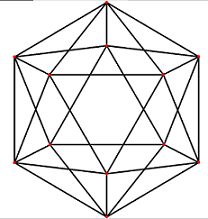
The “public-private”department of government organizing the comprehensive data collection designated for vaccine passports is called the National Interoperability Collaborative, https://nic-us.org and here’s its logo.
*The NIC is managed under the auspices of the Stewards of Change Institute, SOCI, that happens to reverse to twilight-language-like ICOS, adding possible meaning to “icosahedron” and the ICOS immune complex (standing for “Inducible CO-Stimulator” signal pathway. More on this in a later post)
Another “MA gene” candidate comes not from bacteria but from a human Denisovan:
MA-1 gene:
[2013]“…Here we sequence the draft genome of an approximately 24,000-year-old individual (MA-1), from Mal’ta in south-central Siberia9, to an average depth of 1×. To our knowledge this is the oldest anatomically modern human genome reported to date. The MA-1 mitochondrial genome belongs to haplogroup U, which has also been found at high frequency among Upper Palaeolithic and Mesolithic European hunter-gatherers10,11,12, and the Y chromosome of MA-1 is basal to modern-day western Eurasians and near the root of most Native American lineages5. Similarly, we find autosomal evidence that MA-1 is basal to modern-day western Eurasians and genetically closely related to modern-day Native Americans, with no close affinity to east Asians. This suggests that populations related to contemporary western Eurasians had a more north-easterly distribution 24,000 years ago than commonly thought…” https://www.nature.com/articles/nature12736/
First to do it, an Israeli team established at Hebrew University produced “The artistic rendering of the head and face of a 13-year-old girl from the prehistoric… Denisovans, based on technology developed by Hebrew University professor Liran Carmel and his team. The bust was revealed at a news conference in Jerusalem on Sept. 19, 2019 [9-19-19]” https://www.livescience.com/denisovans-extinct-human-relative ; Team member David Gokhman, currently at the Weizmann Institute, specializes in cellular hybrids of human-apes with a focus on brain and neuronal structures. https://www.weizmann.ac.il/WeizmannCompass/sections/new-scientists/dr-david-gokhman; (example) “Here we utilized human-chimpanzee hybrid induced pluripotent stem cells to study gene expression separating these species…and to control for nongenetic confounding factors. We differentiated these cells into cranial neural crest cells, the primary cell type giving rise to the face….” https://pubmed.ncbi.nlm.nih.gov/33731941/
Remember the unexplained “Chromosome 8” marker gene target from the Covid PCR tests? A particular distinction of chromosome 8 separates humans from other primates.
*
Build Back a Better (?) Brain:
“How to design and build abnormal brains using radiation during
development. In Disorders of the Developing NervousSystem,
Fields, W.S. and Desmond, M.M., eds.. Springfield, Ill:Thomas,
1961. Also available as US Atomic Energy Comm TID6159:1-28, Jun
60; pp. 60-97.##”
–Notice the year date 1960 while McCone was AEC chairman and AEC security was peopled with ONI (Office of Naval Intelligence). I singled out this citation above for the ‘polio forever’ blog from a bibliographic source in GWU’s “national archive” used by President Clinton’s Advisory Commission on Human Radiation Experiments (ACHRE) https://nsarchive2.gwu.edu/radiation/dir/mstreet/research/pubs/titles.txt The two researchers responsible for this 1960 study are Samuel P. Hicks and Constance J. D’Amato, and while I can’t find the text of “How to…build abnormal brains”, a search on either Hicks or D’Amato yields similar material.
Examples for Hicks: Research works by Samuel P. Hicks https://www.researchgate.net/scientific-contributions/Samuel-P-Hicks-2061151130 ; Obit from UMichigan –Naval officer at Strong Memorial Hosp in Rochester NY during WWII (infamous for plutonium feeding), US Navy pathologist (1946-47), Naval Medical Center, etc. https://record.umich.edu/articles/obituary-samuel-p-hicks/ ; 1968 brain study under AEC contract https://onlinelibrary.wiley.com/doi/10.1002/ar.1091600311
…more END NOTES to Part Four and a forthcoming epilogue of the Crow are in progress…..
*
*
*

